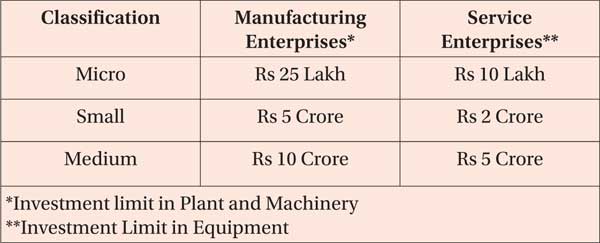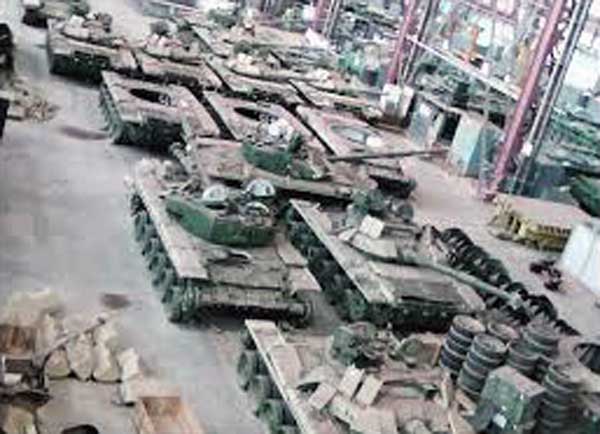The defence industry, more so the aviation sector has been in a state of excitement ever since the announcement was made of “Make in India” with policies to support the slogan. The FDI limits were increased; a list of items requiring an industrial licence was published in June 2014, and a security manual for the licensed defence industries was notified; projects were cleared by the DAC worth hundreds of crores, but the manufacturing process just did not gather momentum. The policies, the clearances, the increase in FDI, all seemed to favour large private corporate organisations and the DPSUs; one sector seems to have been either totally neglected or paid mere lip service – that is of the Micro-Small-Medium Enterprises, the MSMEs.
The Micro, Small and Medium Enterprises (MSME) sector has emerged as a highly vibrant and dynamic sector of the Indian economy over the last five decades..
Mission “Make in India” was launched a year ago, to transform the country’s economy by taking the focus away from the services sector and convert the nation into a manufacturing hub. To achieve success in the initiative, an eco-system was planned to be put in place with simplified licensing procedures, lesser bureaucratic hurdles and red tape, with an easy inflow of investments; the initiation of the process was to begin with defence manufacturing. New policies have been released in the recent past, more are in the pipeline, and are supposed to provide a thrust to India’s pursuit for self-reliance in defence production; the policies have clauses to support indigenisation and upgrading of technology. But, has this not been the thrust since Independence? Sadly, defence imports continue, even in indigenous products!
The defence industry, more so the aviation sector has been in a state of excitement ever since the announcement was made of “Make in India” with policies to support the slogan. The Foreign Direct Investment (FDI) limits were increased; a list of items requiring an industrial licence was published in June 2014, and a security manual for the licensed defence industries was notified; projects were cleared by the Defence Acquisition Council (DAC) worth hundreds of crore, but the manufacturing process just did not gather momentum. The policies, the clearances, the increase in FDI, all seemed to favour large private corporates and the Defence Public Sector Undertakings (DPSUs); one sector seems to have been either totally neglected or paid mere lip service – that is of the Micro-Small-Medium Enterprises, the MSMEs.
What is an MSME?
The MSME Development (MSMED) Act, 2006 defines MSMEs based on their investment in plant and machinery, for a manufacturing enterprise, and on equipment for enterprises providing or rendering services. The present ceilings on investment for enterprises to be classified as Micro, Small and Medium Enterprises are as follows:

)Source: “MSME at a Glance”, a booklet published by the MINISTRY OF MICRO, SMALL & MEDIUM ENTERPRISES)
In order to achieve self-reliance in defence production and subsequently emerge as a significant defence player, India needs to improve the competitiveness of its MSMEs…
The Micro, Small and Medium Enterprises (MSME) sector has emerged as a highly vibrant and dynamic sector of the Indian economy over the last five decades. MSMEs not only play a crucial role in providing significant employment opportunities at comparatively lower capital cost than large industries, but also help in industrialisation of rural and backward areas, thereby, reducing regional imbalances, assuring more equitable distribution of national income and wealth. MSMEs are complementary to large industries as ancillary units and this sector contributes enormously to the socio-economic development of the nation. Some of the known sectors are the Coir Board and the Khadi and Village Industries Commission (KVIC). The primary responsibility of promotion and development of MSMEs is that of the State Governments, however, the Government of India (GoI) supplements the efforts of the State Governments through various initiatives.
MSMEs are the key drivers of long-term sustainable growth. Empirical evidences also show a positive relationship between R&D investments, skilled labour and knowledge spill-over on the one hand, and economic growth on the other. Further, globalisation has also radically changed the geography of innovation, with new players, markets, and opportunities emerging over the last two decades.
MSMEs may have more impact on innovation than it would appear from their contribution to R&D activity. In sectors like the aerospace and defence industry, MSMEs contribute most to innovation because of low scale of economies and the high importance of knowledge. Collective learning networks encourage innovation, especially for the enterprises that lack the assets and resources to invest directly in R&D. In the current economic context, the ability to innovate and build entrepreneurial societies is even more compelling than before.
The MSME sector is a pulsating and energetic sector; there is only the need to harness its potential…
The aerospace and defence industry is of strategic importance to any nation. It is an acknowledged fact that India needs to increase self-reliance in its own national interest. On the other hand, the international defence industry today is universal in nature with a complex network of global supply chains. It, therefore, is imperative for MSMEs to integrate themselves into the supply chains of national and international defence majors, in order to reduce dependence on foreign supplies and also to gain a foothold in the international aerospace and defence market. In India, many MSMEs have served as suppliers to DPSUs and played a significant role in the Indian defence-manufacturing sector, but their contribution has largely remained unnoticed. In order to achieve self-reliance in defence production and subsequently emerge as a significant defence player, India needs to improve the competitiveness of its MSMEs and enhance their role in the Indian defence industry.
Enhance MSME Participation
India ranks among the top ten countries in the world in terms of military expenditure. The country’s cumulative defence budget, capital plus revenue expenditure have grown over the years. However, around 70 per cent of defence procurements continue to be through imports. In case of indigenous manufacture, a substantial portion of production continues to be under government’s jurisdiction because of the critical and sensitive nature of the sector and a belief that the private sector does not have the requisite capability. Notwithstanding the policies aimed towards encouraging manufacture in the private sector, the potential of both the large companies, and MSME contribution in defence, remains to be fully realised.
To enhance productivity, competitiveness, and employment generation in the manufacturing sector, the GoI set up the National Manufacturing Competitiveness Council (NMCC) in October 2004, to serve as a forum for coherent policy initiatives. After studying the policies of eight countries, including China, the NMCC, in its report submitted in 2008, made a special recommendation in favour of small and medium-scale manufacturing industries; most of the recommendations made by the NMCC were accepted.
Today, the same MSME sector possesses domain knowledge, is agile and dynamic in its thinking….
The MSMED Act was notified in 2006 to address policy issues affecting MSMEs as well as the coverage and investment ceiling of the sector. The Act seeks to facilitate the development of these enterprises as also enhance their competitiveness. It provides the first-ever legal framework for recognition of the concept of “enterprise” which comprises both manufacturing and service entities. Establishment of specific funds for the promotion, development and enhancing competitiveness of these enterprises, progressive credit policies and practices, preference in Government procurements to products and services of these enterprises, more effective mechanisms for mitigating the problems of delayed payments to MSMEs, are some of the salient features of the Act. Both, the recommendations of the NMCC and the provisions in the MSMED Act, have borne fruit as in recent years, the MSME sector has consistently registered a higher growth rate as compared to the manufacturing and industrial sector. However, the contribution in the defence manufacturing is minimal.
Challenges Faced by the Sector
In the current global financial crisis not only the MSMEs, but all stakeholders in the economy have been impacted adversely. In this process, all MSMEs, more so in the defence-manufacturing sector, are facing an uphill task to manage operating profitability, access to adequate risk or debt capital and availability of professional help or advisory services to deal with the crisis-situation.
Some of the challenges faced by the MSMEs in the defence-manufacturing are:
- Access to markets.
- Access to information and business development services.
- Non-recovery of dues/payments from large-scale buyers.
- Increased Competition.
- Financing challenges due to low credit penetration.
- Rigidity in implementation of the Offset Policy.
- High Transaction Costs.
- MSME promotional framework.







There is no doubt that majority of PSUs have got enough knowledge and experience to develop new items or to improve excising items, India is the only country using different makes of of equipment.. But this advantage has not been used properly because of the defense officers and the UPA Govt. mind sets for the last so many years, Their craving for foreign equipment should stop. This is more in IAF , They are ready to use any foreign plane even it is dangerous to use. Mig 21 is a clear example. But they refused to accept Kaveri engine saying that thrust is less. But when we used Gnat nobody talked about the thrust.